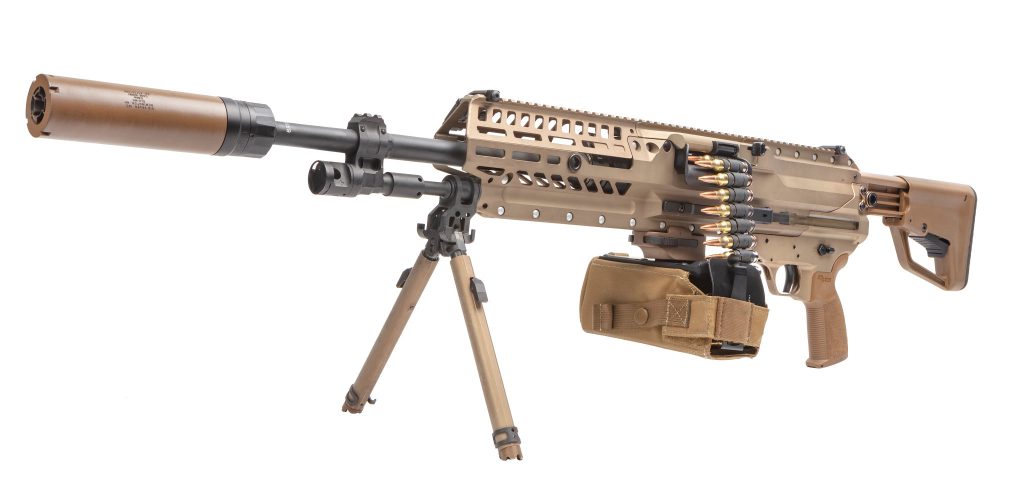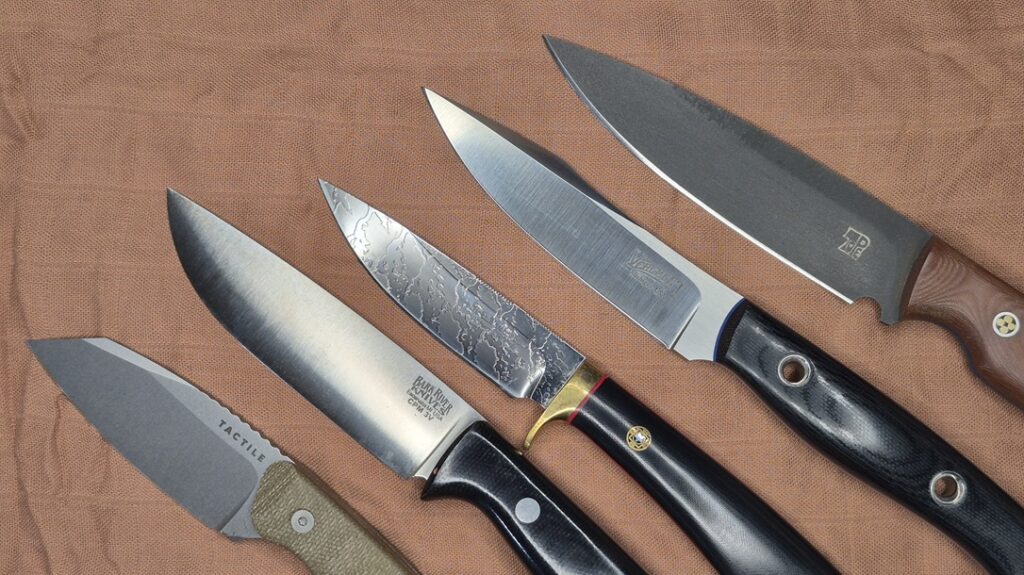Since the Army’s announcement of the NGSW winner, Sig Sauer, and the designation the the XM5 and XM250 the internet has been wild in the gun space. Lots and lots of commentary, one of the chief things I note are that people are usually missing a piece of the whole program when they level a complaint.
The most common is a misunderstanding of the new ammunition. The rest are various critical comments of that vary between having some merit and having little merit as they are ascribing problems where there aren’t any, or most commonly ascribing a particular problem more weight than it actually merits.
An example. The LPVO is more fragile and heavier than optics like an ACOG but offer increased capabilities, it has still been found suitable for use by special forces and conventional forces on rifles and carbines. This often translates to comments like, “LPVOs are fragile! Why would you put a fragile optic into combat!? Why would we do this? It’s stupid!”
Advertisement — Continue Reading Below
It the vehement grafting to one fact or position that overshadows the balance of nuances involved. It’s the same incomplete logic loop where we get 5.56 is a “poodle shooter”, or “designed to wound”. Let’s acknowledge that we have progressed beyond dated concepts.
How it is like the M14
The XM5 is like the M14 in capacity and role. It is the primary individual rifle, partnered with the XM250, and if you put a rifle squad together with M14’s and M60’s it would look a whole lot like the squad with XM5’s and XM250’s at first glance.
Capacity limitations will be similar, magazines and belts taking up more space than their 5.56 counterparts and offering only 20 or 25 rounds instead of the 30’s. This is one of the most contentious points for the new rifle, the fact soldiers ammunition allotment over the same space and weight will be fewer rounds and that more capable ammunition won’t make up the difference. To this I’d say we’d have seen concern from people who are currently running MK17 rifles, KAC SR-25 carbines, or the M110A1’s. This is still a point of similarity however.
Advertisement — Continue Reading Below
Weight is also a point. The 8.4lb MCX is much closer to the 9lb M14 than it is the 7lb M4.
We are spoiled that the M4A1’s base rifle is 6.4lbs slick. Comparatively however, the HK417A2, comparable to the XM5 both with a 13″ barrel is 9.3lbs. The M110A1 also breaks 9lbs the moment you add a single accessory, 8.73lbs slick. The M249 is 17lbs slick (and awkward as hell to carry) while the M60E6 is 20.4lb and the M240L weighs 22lbs, Barrett’s experimental M240 LW variant could cut that to 20lbs. The new XM250 cuts that LMG weight to 12lbs, with greater effective range and lighter ammunition than either the M60 or M240. The XM250 is equipped to use much better slings than previous weapon and has several features that will make it more comfortably portable than any current system, in addition to the weight savings.
Rifles will be slightly heavier, light machine guns will be significantly lighter.
Advertisement — Continue Reading Below
If we compare the XM5 to the M27 IAR the base rifles are much closer in weight, and the XM5 comes in shorter at 34.1 inches vs the M27’s 36.9 inches. Two inches off the front, especially heavy barrel steel, makes a difference in handling even if the rifle is heavier in absolute terms. We see this play out in the M16A4 to M27, the M27 handles better but is heavier, and even an M4A1 to a rifle like the X95 which adds over a pound but is less fatiguing to shoot.
As for full-auto, I have no basis to judge 6.8 recoil right now. This may end up slowing semi-auto rates of fire as recoil disrupts sight pictures more too. But I do not know. I do know that the XM5/MCX SPEARs inline recoil mechanics with the stock will result in more controllable impulses than the M14’s offline stock. In the M14 the recoil transfers to the shooter at a higher point, often over the shoulder instead of into it. I expect the XM5 will handle like the MK 17 in automatic, robust but controllable in short bursts.
But superficially, yes, it would appear many of the M14 issues could recur in the XM5.
Advertisement — Continue Reading Below
How it isn’t like the M14
We’ll go down the list and hit each point, but the short version is really the development. The development cycle was very different and, unlike the efforts made in the M14’s process to make sure we kept our nostalgic rifle and caliber, the efforts from all competitors in the NGSW were based on hitting performance metrics around a specific ammunition performance envelope. It had to be a 6.8, using an A1 type projectile given by the Army, and it had to hit other physical performance goals like weight, accuracy, stoppage rate, manual, maintenance, etc.
So let’s address some individual components.
6.8×51 (“277 Fury”)
What is old is new again, just higher pressure. The .276 Pedersen was 7x51mm and the 277 Fury is 6.8x51mm. The .276 Pedersen had a muzzle velocity of 2,740 fps in a 24″ barrel and the new 277 Fury will be pushing a 135gr round at 3,000 fps in a 16″ barrel. Unknown if the new projectile is faster than the listed match load so that it will reach 3,000 in the shorter 13″ barrels of the XM5.
Advertisement — Continue Reading Below
Army wanted the speed advantages realized in the M16 and M4 combined with the battle rifle optimal projectile mass so that the rifles and automatic rifles/light machine guns would be able to cover a much greater area than current systems, with greater intermediate and armor defeat capability too.
This contest wasn’t about a new rifle. The MCX isn’t that new of a rifle, even in the SPEAR format. The Army wanted a new caliber, and this time they picked optimal physics over nostalgia. Good for them.
This is the biggest difference between the M14 program and the XM5 program, how we went about picking the caliber. We were not clinging to 30.06, we went where data says ‘optimal’ infantry calibers should be. We knew this in 1928, we revisited the knowledge during the NATO development trials in the late 40’s and 50’s, but stuck with .30 then. We then over corrected our .30 error by going super light and fast, and found that it worked pretty well for 300 meters and in. We even optimized it to the absolute limits of what 5.56 can do, and it does it pretty darn well. We just couldn’t out run the physics of what a .22 diameter round at optimal mass could give us in the powder charges available.
Advertisement — Continue Reading Below
Ultimately, .30 caliber was too thick and slowed down too fast in the mass they wanted, .22 was too lightweight even in an optimal bullet shape (77gr) so it just lost too much energy for the further distances. 6.8 was just right, proper mass in the correct shape. We’ve known this a long time. .276 Pedersen to 277 Fury is the same advancement curve we put 5.56 through when we went from 20″ barrels to 14.5″ and optimized the powder burn and projectile design.
That is what the Army wanted, greater range envelope and as optimal a projectile for it as they could get when considering external (flight) and terminal (impact and effect on target) ballistics. Sig delivered that.
The XM5, MCX SPEAR

Advertisement — Continue Reading Below
Unlike the M14, which was trying to hold onto a dated obsolescent design, the MCX follows the improved control patterns of the widely recognized rifle ergonomic king, Eugene Stoner. The MCX is nothing more than the AR-10, AR-15, AR-18, and SR-25 in their best form. Sig didn’t try and reinvent the service rifle, they took what was best out of our current service rifles and battle rifles and then built it in 6.8.
Giving a soldier who has an M4A1 an XM5 is going to make sense to the soldier. Every control is where it was, plus some bonus functions that make their lives better, like the folding stock, full ambidextrous controls, and mid-receiver charging handle backing the rear-receiver AR type. The current handling skill transfers and has avenues for improvements. This was always a strength of the MCX over the other competitors, it stuck to things that worked and that soldiers, our soldiers, are familiar with.
They kept it simple. They made it work.
Advertisement — Continue Reading Below
The MCX isn’t fighting against better ergonomics to deliver a rifle that looks like it won WWII, it is taking the current best practices in the modern manual of arms and is delivering them to the soldier. Anyone could bring an XM5 into a modern AR centric rifle course, one that used the fancier control suites like KAC, LMT, Radian, etc. use, and perform fine. With the capabilities shift accounted for, the MCX SPEAR was the most ‘drop-in’ of the rifle submissions.
That matters, especially if you consider that all the rifles likely functioned well (at least firing conventional ammunition). I have doubts about the field conditions performance of both the True Velocity and Textron ammos. True Velocity has never received a glowing recommendation from the small batch testers I have spoken with, reporting a significant failure rate even in bolt action rifles. I have not tried any of their .308 or 6.5 in any auto-loader or bolt action.
As a side note, a suspect Beretta and True Velocity’s ‘Genesis’ is going to be tuned for brass more than the polymer cases that cost $69.99/20.
The XM250, MG68

In the parallel fashion of the XM5, the XM250 light machine gun/automatic rifle is going to make sense to people who are currently familiar with the M249 and M240. Every control an M249 user expects to be there is going to be there, with a few bonuses like the safety selector being more consistent the M4A1 and XM5.
The biggest addition, the XM250 is select fire. It has semi-automatic, this is a feature that is increasingly added to light machine guns to ease accurate zeroing and give an accurate single shot capability on demand. We just haven’t seen it adopted by a large force like the US, we clung to the M249 SAW and a small number of alternate M249 SAW variants.
The same complexities of belted ammunition are going to apply, but those aren’t terrible to work around and we’ve done well smoothing out the disintegrating link system. It’s lighter than the SAW, more ergonomic than the SAW, and much longer range than the SAW. It should out distance the M240 also thanks to higher velocity and higher ballistic coefficient ammunition.
Small machine gunner inspired improvements were made to things like the feed tray and charging handle. The tray now opens up/sideways instead of up/forward. This offers a lower profile and doesn’t bang up optics. If I recall correctly it retains the M240’s ability to be loaded “closed” by pushing the rounds through the feed paws. The charging is now operated by the support hand (left) and folds out of the way when not in use.
The XM250 is a logical progression of things machine gunners have wanted using the M240 and M249 actively for the last two decades.
One of my chief questions now is will the Marines adopt the XM5/XM250, reversing (partially) their decision to go to a magazine fed system? I believe it would be a good move, get a true light machine gun back. They may also go for a variant of the XM5, more heavily barreled, and keep the current light infantry rifle squad format they have with the M27’s. The M27 being a more heavily barreled, piston driven, and bayonet mountable, AR design. Maybe an MCX SPEAR with a 14.5″ or 16″ barrel. Maybe they get an HK417A2 because they like the M27.
The Cartridge Case
Just like the XM5 didn’t try and reinvent the battle rifle and the XM250 didn’t try and reinvent the light machine gun, the new hybrid metallic case that Sig came up with didn’t try and reinvent the metallic centerfire cartridge. It just takes advantage of a few things we know so that this 80,000 psi beastie can do its thing.
Firstly, brass cases need thick bases, not thick walls, because of how they are formed. Secondly, stainless steel can be used instead and be thinner, stronger, and lighter than brass. Thirdly, that gives the base of the case more space for a larger powder charge. Fourthly, the stainless steel rim and base is stronger and less prone to bursting, tearing on the extractor, or blasting a primer away.

In short, the multi-piece design results on a much stronger base case, is lighter weight, and is less prone to the failings of brass formed base cases. It is a four piece design instead of a two. The hybrid case has the stainless base, sealing washer, brass wall, and primer.















